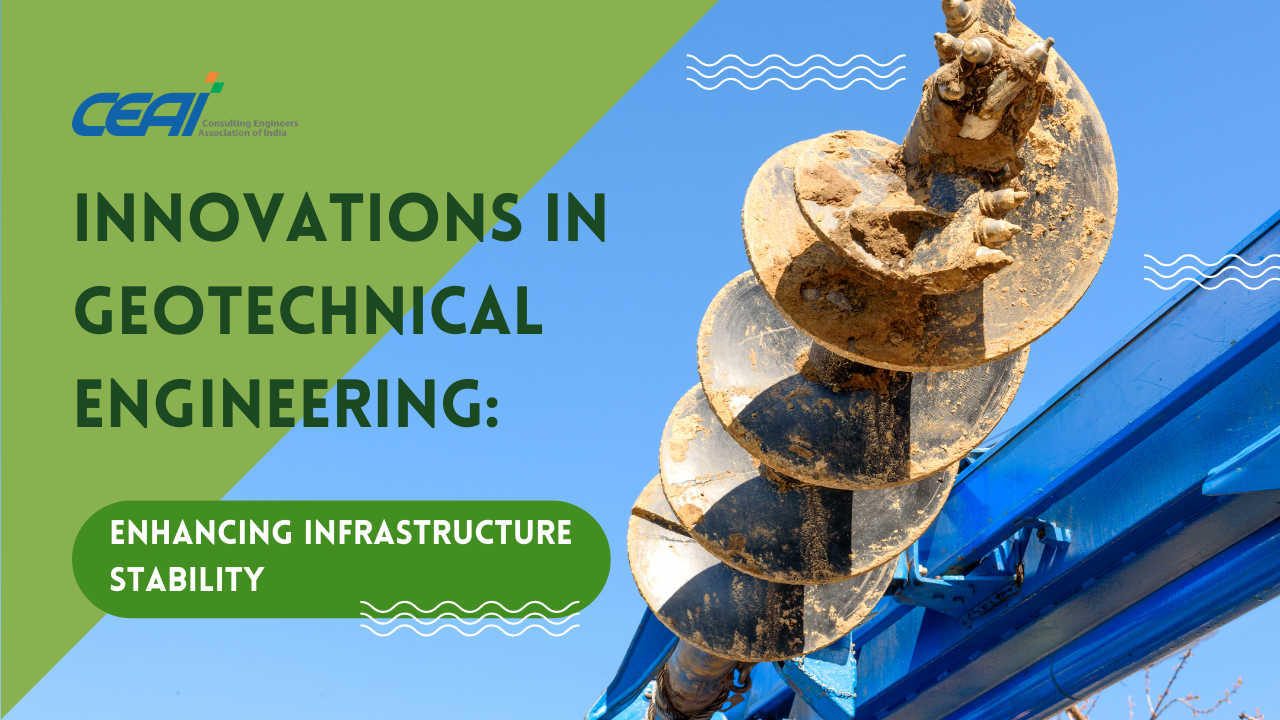
Geotechnical engineering plays a critical role in ensuring the stability and safety of infrastructure projects. With the rapid advancements in technology and engineering practices, the field of geotechnical engineering is experiencing a wave of innovations that are revolutionizing the industry. These innovations not only improve the efficiency of construction projects but also enhance the overall stability and resilience of infrastructure. In this comprehensive blog, we will delve into the fascinating world of geotechnical engineering innovations and explore how they are shaping the future of infrastructure development.
Remote Sensing and Geospatial Technologies
In the realm of geotechnical engineering, remote sensing technologies and geospatial data analysis have emerged as game-changers. These technologies provide engineers with high-resolution data on topography, land cover, and geology. By integrating remote sensing and geospatial technologies, geotechnical engineers can make informed decisions regarding site selection, slope stability analysis, and foundation design. The enhanced accuracy and efficiency offered by these technologies contribute to the overall success and safety of infrastructure projects.
Geotechnical Instrumentation and Monitoring
Monitoring the behavior and performance of geotechnical structures is vital for ensuring their stability. Innovations in geotechnical instrumentation have resulted in the development of advanced sensors and monitoring systems. These technologies provide real-time data on factors such as stress, deformation, and groundwater levels. By analyzing this data, engineers can identify potential issues, implement timely remedial measures, and minimize the risk of failures. The integration of geotechnical instrumentation and monitoring enhances the overall performance and longevity of infrastructure.

Advanced Geotechnical Modeling and Simulation
Computer-aided modeling and simulation tools have significantly advanced the field of geotechnical engineering. Three-dimensional finite element analysis (FEA) and computational fluid dynamics (CFD) enable engineers to simulate complex geotechnical scenarios and predict the behavior of soil and structures under various conditions. By leveraging these advanced modeling techniques, engineers can optimize designs, evaluate the effects of different factors on stability, and mitigate potential risks. This leads to more cost-effective and reliable geotechnical solutions.
Sustainable Geotechnical Solutions
With the growing emphasis on sustainability, geotechnical engineering has witnessed a shift towards more sustainable practices. Innovations in this area focus on utilizing environmentally friendly materials, incorporating geosynthetics for erosion control and reinforcement, and implementing geotechnical solutions that minimize the environmental impact. By adopting sustainable geotechnical practices, engineers not only enhance the long-term performance of infrastructure but also contribute to the preservation of natural resources and ecosystems.
Geotechnical Risk Assessment and Management
Another significant innovation in geotechnical engineering is the advancement in risk assessment and management techniques. Engineers now have access to sophisticated tools and methodologies that allow for a comprehensive evaluation of geotechnical risks. Through detailed analysis and evaluation of site conditions, soil properties, and potential hazards, engineers can proactively identify and mitigate risks associated with geotechnical instability. This proactive approach ensures safer and more resilient infrastructure, minimizing the likelihood of unexpected failures and reducing the potential impact on surrounding areas.

Geotechnical Data Analytics and Machine Learning
The integration of data analytics and machine learning in geotechnical engineering has brought forth new opportunities for enhanced decision-making and predictive modeling. By leveraging large datasets and applying advanced algorithms, engineers can extract valuable insights and patterns from geotechnical data. This enables them to make data-driven decisions, optimize designs, and accurately predict the behavior of soil and structures. The use of geotechnical data analytics and machine learning techniques enhances the efficiency, accuracy, and reliability of geotechnical engineering practices.
Conclusion
Innovations in geotechnical engineering are transforming the way we approach infrastructure stability. From remote sensing and monitoring technologies to advanced modeling techniques and sustainable practices, these innovations enable engineers to design and construct infrastructure that is safe, resilient, and sustainable. By embracing these advancements, consulting engineers can meet the challenges of today’s complex projects while contributing to a more sustainable future.
